Surgery for thyroid cancer
- PMID: 18177802
- PMCID: PMC4389794
- DOI: 10.1016/j.soc.2007.10.014
Surgery for thyroid cancer
Abstract
A technique of thyroidectomy that facilitates resection of the thyroid, preserves the parathyroid glands with their blood supply, and preserves the recurrent and the superior laryngeal nerves is described. This technique provides a simple and versatile means of complete extracapsular thyroidectomy for lesions of the thyroid gland and minimizes postoperative complications.
Figures




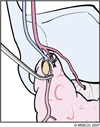
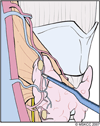

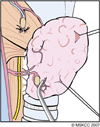




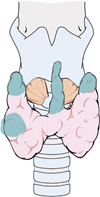
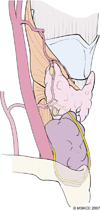
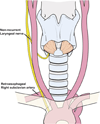
References
-
- Newman E, Shaha AR. Substernal goiter. J Surg Oncol. 1995;60(3):207–212. - PubMed
-
- Johnson JT, Wagner RL. Infection following uncontaminated head and neck surgery. Arch Otolaryngol Head Neck Surg. 1987;113(4):368–369. - PubMed
-
- Friedman M, LoSavio P, Ibrahim H. Superior laryngeal nerve identification and preservation in thyroidectomy. Arch Otolaryngol Head Neck Surg. 2002;128(3):296–303. - PubMed
-
- Skandalakis JE, Droulias C, Harlaftis N, et al. The recurrent laryngeal nerve. AmSurg. 1976;42(9):629–634. - PubMed
-
- Blumberg NA. Observations on the pyramidal lobe of the thyroid gland. S Afr Med J. 1981;59(26):949–950. - PubMed
Publication types
MeSH terms
Grants and funding
LinkOut - more resources
Full Text Sources
Medical

